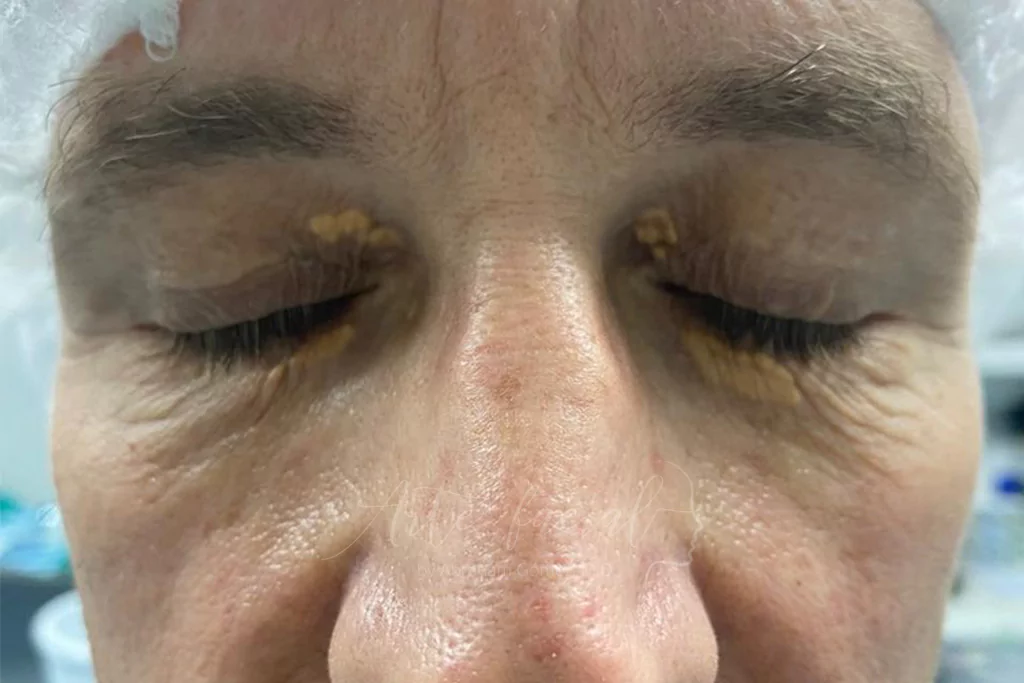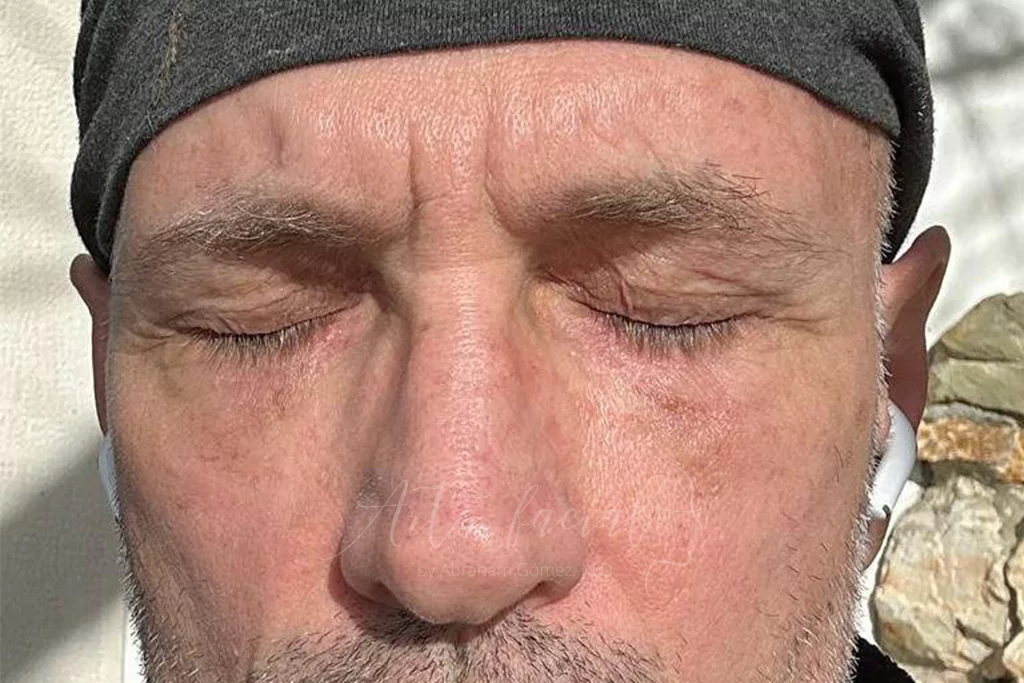Xanthelasma are benign lesions that appear as yellow deposits on the upper and lower eyelids. They can be flat or raised on the skin, contain cholesterol, and maybe a sign of high blood cholesterol, although this is not always the case.
These fat deposits are usually asymptomatic, meaning that vision and eyelid function are not impaired. However, most patients dislike their appearance and will consult for treatment for cosmetic rather than functional reasons.
Is there a non-surgical way to get rid of xanthelasma?
Before undergoing surgery for these bothersome growths, most patients will try other less invasive options. Popular treatments include superficial removal with laser, chemical peels, and plasma radiofrequency ablation. These treatments may offer some improvement of the xanthelasma for some time, but they are unlikely to eliminate the lesion permanently because the cholesterol deposits accumulate deeper underneath the skin. Therefore, the xanthelasma will tend to recur unless the cholesterol deposits are entirely removed.


Why surgical excision is the best option for eliminating xanthelasma
Treating xanthelasma more permanently requires completely removing the fat deposits underneath the skin layer. That is, en bloc removal of the xanthelasma, including skin, subcutaneous tissue, and, in some cases, muscle, is required during the operation. Some surgeons perform the resection with a laser, while others employ the more conventional scalpel.
Depending on patient preference and the size of the lesion, surgical excision may be done under local anesthesia or mild intravenous sedation. Additionally, depending on the extension and depth of the xanthelasma, a complex reconstruction of the eyelid using flaps or skin grafts may be required.











 |
|